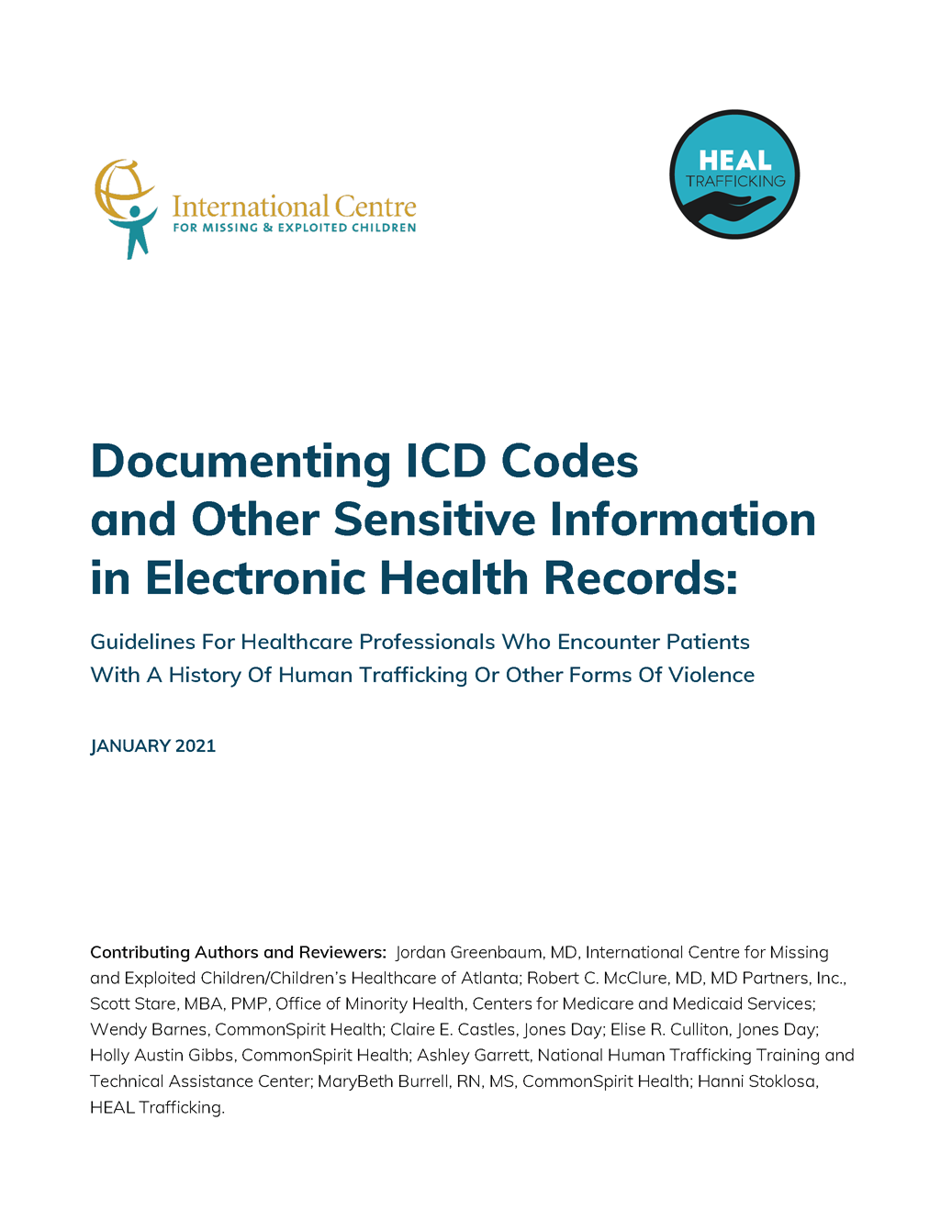Guidelines Documenting ICD-10 Codes and Other Sensitive Information in Electronic Health Record
At a Glance
In 2018, the Centers for Disease Control and Prevention adopted new ICD codes to describe human trafficking (HT). These specific HT codes allow healthcare professionals and others to optimize continuity of care for trafficked persons, determine health needs and effective treatments for HT-related health conditions, track cases of HT to assist in ensuring adequate resources are provided to communities, and inform local and national prevention and intervention policies. However, in some cases use of violence-related codes (e.g., HT, intimate partner violence, child sexual abuse) could pose a threat to patient and staff safety, and patient confidentiality. In response to these and other concerns, the International Centre for Missing & Exploited Children (ICMEC), HEAL Trafficking and the HHS Office on Trafficking in Persons (OTIP) co-hosted a national convening to discuss the safe use of the codes. The convening was facilitated by the National Human Trafficking Training & Technical Assistance Center (NHTTAC) and attended by those with lived experience of human trafficking, healthcare professionals (HCPs) and representatives from healthcare organizations, key government agencies, the technology industry, and non-governmental organizations.
The following guidelines were developed by a subcommittee of stakeholders, including survivors of labor and sex trafficking, and were written to reflect a trauma-informed, rights-based approach (please see Resources at the end of this document for information on trauma-informed care). The guidelines aim to educate HCPs about how to work with trafficked/exploited/abused patients when making decisions about use of ICD codes and documentation of sensitive information in the electronic health record (EHR).
The information in these guidelines may be used to develop a short HCP learning module on EHR documentation or be embedded within existing general presentations on human trafficking and other types of violence. Much of the information below may already be covered in training materials addressing a trauma-informed approach.
Please note: Healthcare systems, facilities, and HCPS are strongly advised to have their legal counsel review the use and application of any recommendations provided in this document.
The section titled, “Background Information for HCPs” includes essential information and tips for HCPs, and provides the clinician with a foundation of knowledge on which to draw when determining how to engage a particular patient in a discussion of documentation. It is NOT intended to be a list of items that an HCP must discuss with each and every patient. Flexibility is the key: The depth and detail of conversations with patients about documentation will necessarily vary, based on the patient’s developmental level and emotional state, and the clinical context. Following the section on “Background Information” is a series of sample scenarios with scripts that demonstrate potential ways of responding to a variety of situations involving documentation of sensitive information and mandatory reporting.
View the entire fact sheet under Key Resources.


